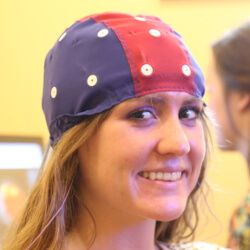Neurofeedback

The nervous system is one of the most intricate creations ever examined by humankind; the irony is that we are attempting to use its gifts and limitations for the purpose of having it examine itself. Through a series of chemical reactions, the brain creates “waves” that influence how we behave. When damage occurs to the brain, or if someone is born with a disability, the neurological system can become unbalanced, leading to conditions such as ADD/ADHD or memory problems. The causes can range from a traumatic brain injury to a stroke, or just everyday life events. qEEQ neurofeedback at The Oxford Center utilizes an FDA-approved Brainmaster neurofeedback device and works by providing positive feedback to the brain to retrain different segments and bring the brain back into balance.
The concept behind neurofeedback dates back to early findings about how the nervous system works. During the time of Luigi Galvani (1737-1798) and George Ohm (1787-1854), experiments were beginning to show that the nervous system appeared to display some traits that were similar to electricity. The findings allowed them to start measuring the different responses of the nervous system to voltages. The experiments conducted began to bring out the concept that scientists would be able to measure the body’s electrical output. Today, we know that the body does not produce the same electricity that we find in the wires on the wall; however, the concepts that scientists such as Galvani worked on have allowed us to measure wavelengths in the brain.
Fast forward to today, and the field of Neurofeedback has grown tremendously. What is Neurofeedback, though? Quite simply, feedback is giving the subject information about itself or its performance that it would not otherwise generally perceive for the purpose of improving and/or changing its performance. In this instance, the subject is the brain, and its performance is its brain wave activity. The brain cannot easily perceive what it is doing. There are no sensors for it to check for optimal functioning beyond maintaining homeostasis. Seeing an EEG, and giving positive feedback when the brain exhibits a good brain wave pattern, the brain learns and remembers how to exhibit only the correct patterns. The best example of this would be like telling your friend to comb her out-of-place hairs.
What is it like to experience the therapy? The person first sits in a large, comfortable chair as a technician puts what looks like a shower cap on the patient. This cap has electrodes connected to it that amplify brain waves so that the computer can read them. This is a non-invasive process in which the person experiences no discomfort, in fact it is very relaxing. After the technician correctly places the NFB cap on the person’s head, the next step will begin. The patient will be directed to look at the television, on which a video will be playing, or he or she will be told to listen to some music. When the brain segment that is being trained is operating within the parameters established by the technician, the music or video will play; when the brain continues to operate out of balance, the music will fade. Over time this process brings the brains different regions back into a normal range of functioning.
To find out how The Oxford Center can help you, call for a no-charge consultation. Call Dr. Tami Peterson’s team today at 248-486-3636 to schedule an appointment at the new state-of-the-art Troy Location at 165 Kirts Blvd., Suite 500, or visit www.OxfordRecoveryCenter.com. Let your healing begin!